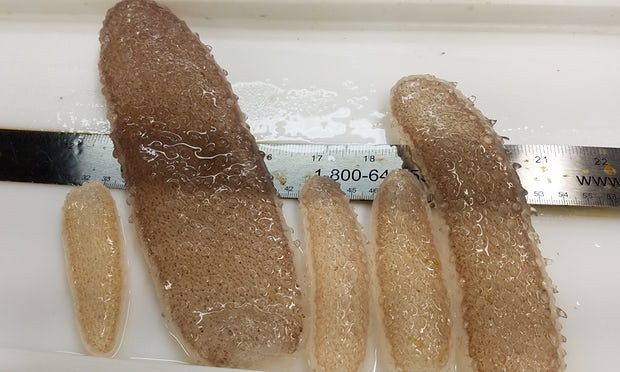Millions of 'unicorns of the ocean' swarm US coast puzzling scientists
Colonies of mysterious sea creature have suddenly appeared in vast numbers along north west Pacific coast.

Off the coasts of Oregon, strange little marine creatures have massed in huge blooms, baffling scientists.
Known as pyrosomes, millions of these odd animals have been washing up on beaches and clogging up fishing nets . Although they are only a few millimetres in size, they have gathered in huge, unprecedented colonies that are so dense they have made fishing impossible.
So far, scientists remain puzzled as to why the creature are now being seen so much more frequently in the region, since they are usually found in warmer, tropical seas. They are normally so rarely observed that some researchers had dubbed them the "unicorns of the ocean".
Sea unicorn bloom
Aboard a ship from the US National Oceanic and Atmospheric Administration (NOAA), researchers from the University of Oregon are investigating the recent pyrosome bloom.
The most abundant and dense colonies were spotted between 40 and 150 miles (64-240 km) off shore.
Pyrosomes - which are also sometimes referred to as "sea pickles" -are very mysterious organisms and it is hoped that the survey will shed a light on their biology and behaviours. Dolphins, whales and a range of fishes are known to prey on the are tubular, gelatinous creatures creatures, but scientists know almost nothing about their feeding behaviour or about their impact on food webs, especially when they are in such high abundance.
Read more about strange marine animals: Peculiar sea creatures found in deep Australian abyss
In a blog post, Hilarie Sorensen, a graduate student at the University of Oregon who is part of the new research team set up to study the bloom, explained that research efforts will focus on improving our understanding of the relationship between recent environmental conditions and pyrosome populations, as well as their role in food web dynamics and their impacts to fishing.
She told The Guardian: "Right now we are scrambling to learn as much as possible while we have the opportunity. If we continue to see this many, what impact will it have on the ecosystems here, and what economic impact on the fisheries? There are so many unknowns at this point, it really is a remarkable bloom."
To explain the recent bloom, the researchers already have one hypothesis. They say that the small animals are being delivered to coastal waters from farther offshore, where the warmer ocean temperatures over the past three years have created an ideal environment for them to thrive.
© Copyright IBTimes 2025. All rights reserved.






















